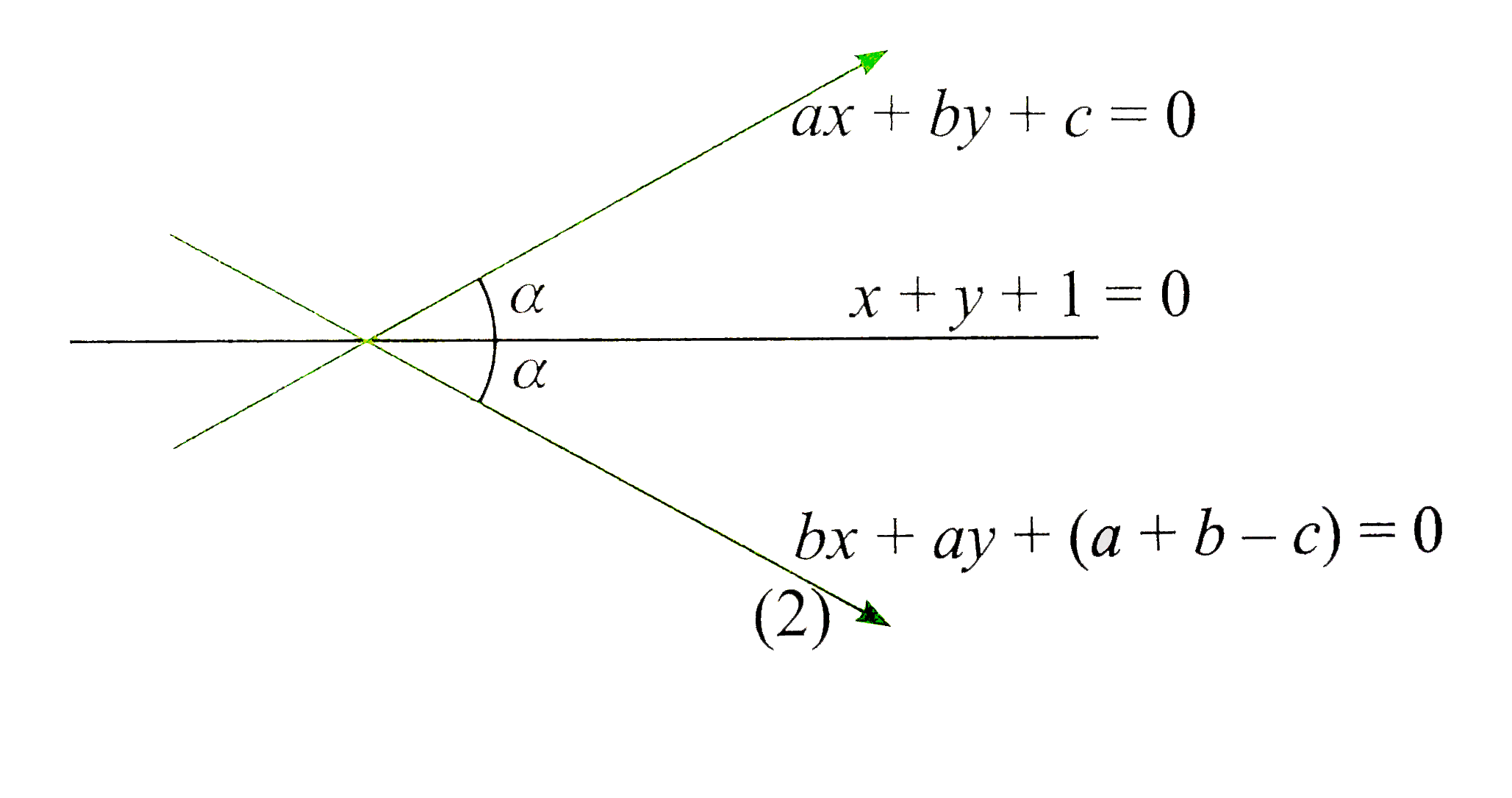Show that the reflection of the line ax+by+c=0 on the line x+y+1=0 is the line bx+ay+(a+b−c)=0 where a≠b.

We have lines
ax+by+c=0 (1)
x+y+1=0 (2)
bx+ay+(a+b−c)=0 (3)
Equations of angle bisectors of (1) and (3) are
|ax+by+c|√a2+b2=|bx+ay+a+b−c|√a2+b2
or ax+by+c=±(bx+ay+a+b−c)
or x+y+1 =0 and (a-b)x+(b-a)y =a+b-2c
Since x+y+1= 0 is one of the bisectors of lines (1) and (3), reflection of line (1) in line (2) is line (3).
Topper's Solved these Questions
- BOOK - CENGAGE ENGLISHCHAPTER - STRAIGHT LINESEXERCISE - CONCEPT APPLICATION EXERCISE 2.65videos
STRAIGHT LINES
- BOOK - CENGAGE ENGLISHCHAPTER - STRAIGHT LINESEXERCISE - EXERCISE (SINGLE CORRECT ANSWER TYPE)82videos
STRAIGHT LINES
- BOOK - CENGAGE ENGLISHCHAPTER - STRAIGHT LINESEXERCISE - CONCEPT APPLICATION EXERCISE 2.48videos
STRAIGHT LINES
- BOOK - CENGAGE ENGLISHCHAPTER - STRAIGHT LINEEXERCISE - Multiple Correct Answers Type8videos
STRAIGHT LINE
- BOOK - CENGAGE ENGLISHCHAPTER - THEORY OF EQUATIONSEXERCISE - JEE ADVANCED (Numerical Value Type )1videos
THEORY OF EQUATIONS
Similar Questions
Show that the reflection of the line ax+by+c=0 on the line x+y+1=0 is the line b+ay+(a+b−c)=0 where a≠b.
View SolutionShow that the reflection of the line px+qy+r=0 in the line x+y+1=0 is the line qx+py+(p+q−r)=0, where p≠−q.
View SolutionShow that the equation to the plane containing the line yb+zc=1,x=0, and parallel to the line xa−zc=1,y=0isxa−yb−zc+1=0, and if 2d is the shortest, distance between given lines, prove that 1d2=1a2+1b2+1c2.
View SolutionThe condition on a and b , such that the portion of the line ax+by−1=0 intercepted between the lines ax+y=0 and x+by=0 subtends a right angle at the origin, is a=b (b) a+b=0 a=2b (d) 2a=b
View SolutionWrite the area of the figure formed by the lines a|x|+b|y|+c=0.
View SolutionFind the equation of image line and reflected line of 2x+3y-5=0 through the line mirror y=x
View SolutionFind the point of intersection of the following pairs of lines: bx+ay=ab and bx+ay=ab.
View SolutionProw that the line through the point (x1,y1)and parallel to the line Ax+By+C=0is A(x−x1)+B(y−y1)=0.
View SolutionA ray of light is incident along a line which meets another line, 7x−y+1=0, at the point (0, 1). The ray isthen reflected from this point along the line, y+2x=1. Then the equation of the line of incidence of the ray of light is (A) 41x+38y−38=0 (B) 41x−38y+38=0 (C) 41x+25y−25=0 (D) 41x−25y+25=0
View SolutionIf the line ax+by+c=0 is a normal to the curve xy=1, then a>0,b>0 a>0,b<0 a⟨0,b⟩0 (d) a<0,b<0 none of these
View Solution

